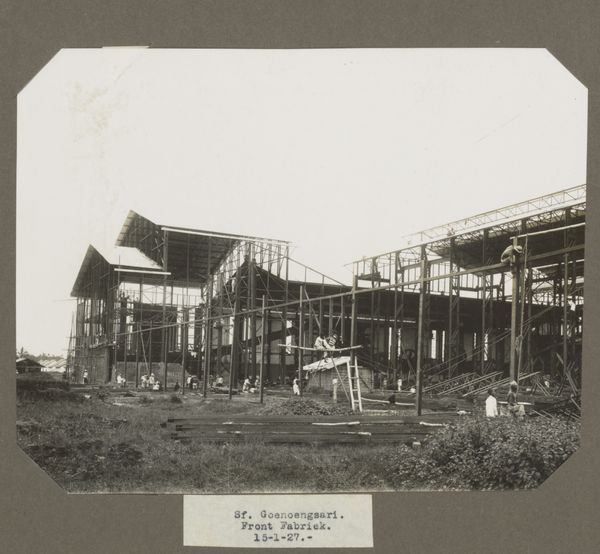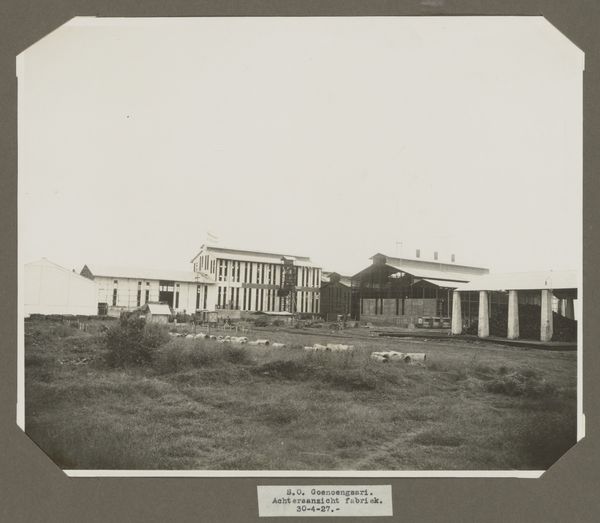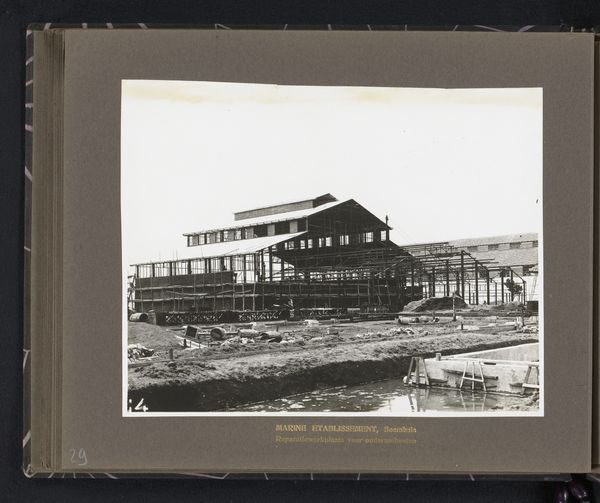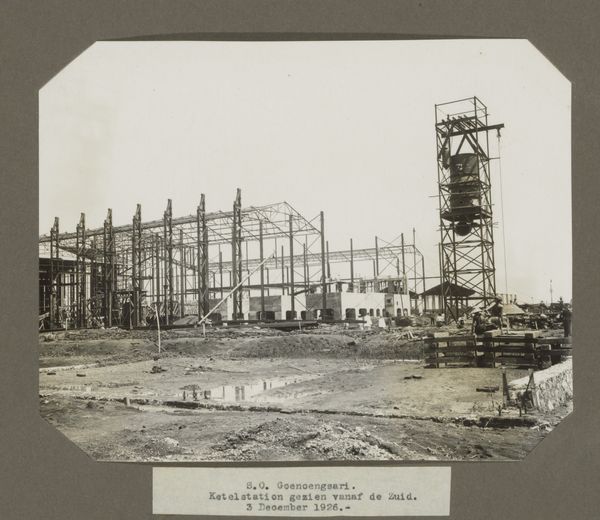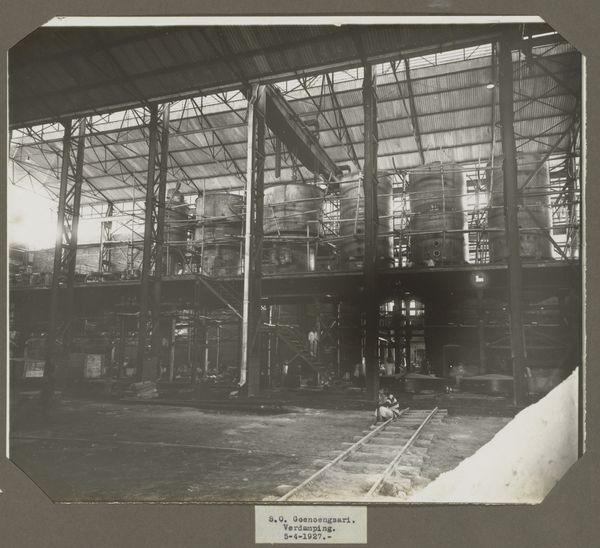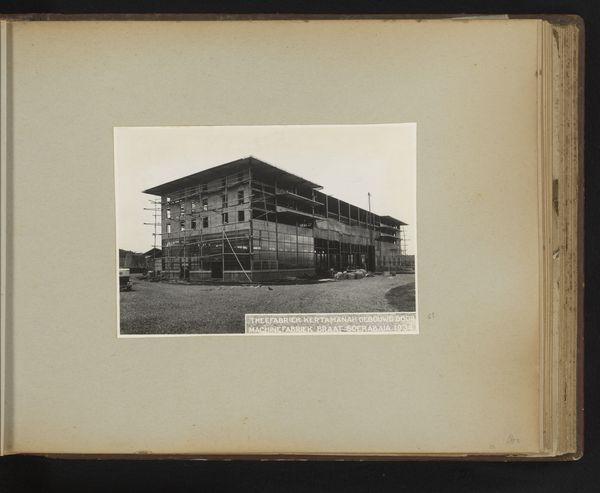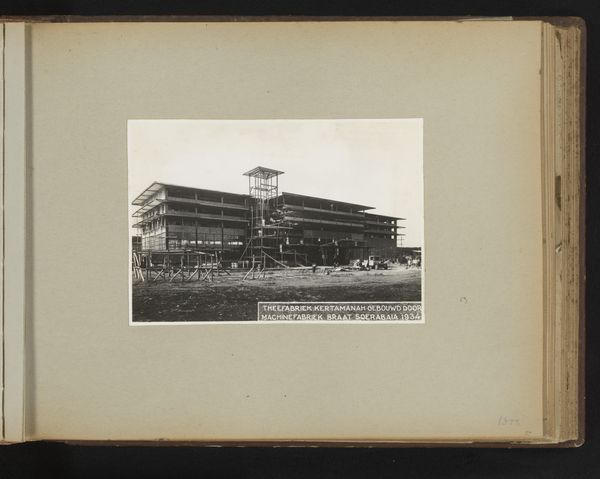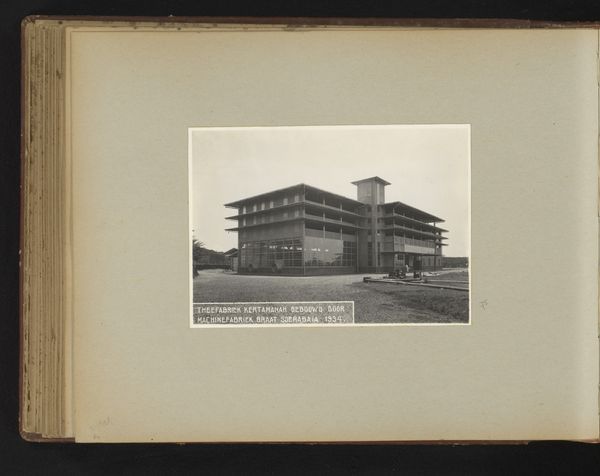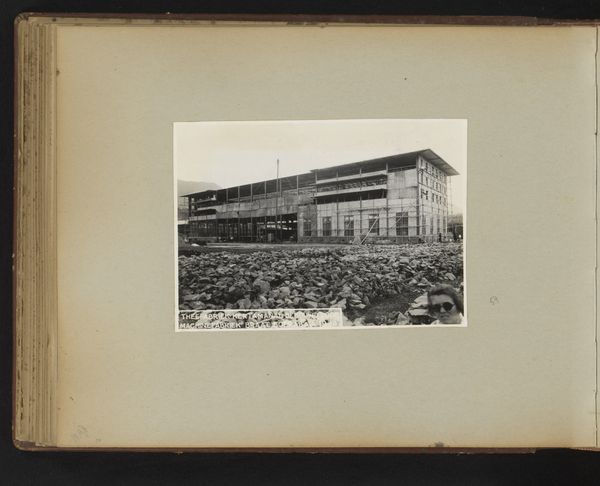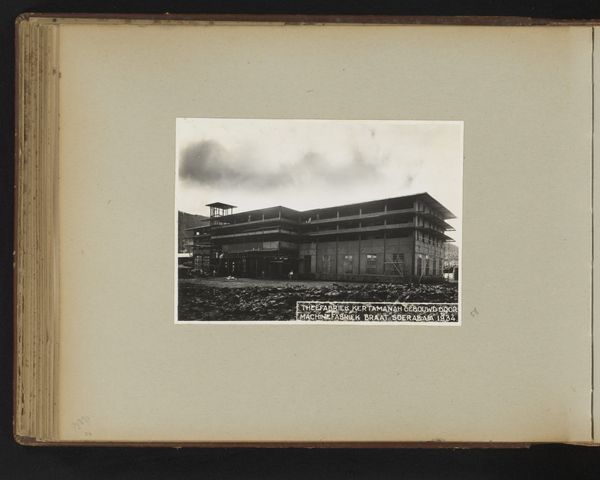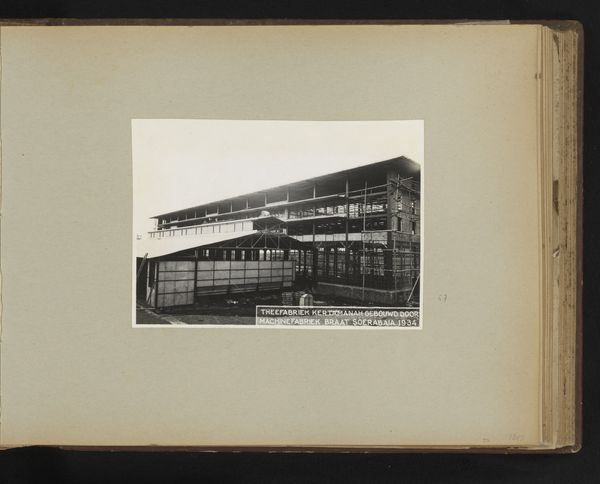
print, metal, photography
# print
#
metal
#
archive photography
#
photography
#
historical photography
#
constructionism
#
cityscape
Dimensions: height 157 mm, width 237 mm
Copyright: Rijks Museum: Open Domain
Curator: This striking 1927 photograph, currently housed in the Rijksmuseum, bears the title "S.O. Goenoengsari. Aanzicht ketelhuis en molenstation." It depicts a cityscape in monochrome tones, realized through photographic print on metal. Editor: My first thought is the sheer volume of raw material on display – all that steel. It has a Constructivist feel to it, but with the weight and heft of actual industrial production. Curator: Absolutely. The work certainly evokes the ideals of Constructionism – the glorification of industry, the emphasis on function. And remember, this wasn't just about aesthetics; it reflected a societal push toward modernization and industrial progress in the early 20th century. The photo is a document of a colonial landscape transforming itself. Editor: It is also worth noting the colonial context; industrial advancements such as these are as much products of, and testament to, exploitative extractive practices of material acquisition and extraction as they are monuments to industrial prowess. Curator: A valid point. The development undoubtedly has implications for labor and resource use. What I find intriguing, though, is how the image becomes a sort of visual propaganda, promoting a specific vision of development in the colonies. Editor: Right. And focusing on materiality reminds us this image is itself a manufactured object. Photography wasn’t neutral, neither was its circulation. Look at the metallic sheen of the print—it subtly reinforces the industrial narrative. Curator: It's fascinating how the photograph can function simultaneously as a record of a specific site and a shaper of public opinion, and historical perspective offers much regarding the impact of images. Editor: Yes, and the materiality—the print itself—plays an active role in shaping that opinion by emphasizing the supposed strength and durability tied up with industry at this time. Curator: Thinking about all the implications behind it, it strikes me how relevant such a photo remains. Editor: It speaks volumes—quite literally—about both ambition and cost. I'm going to be thinking about materiality in the colonies differently from now on.
Comments
No comments
Be the first to comment and join the conversation on the ultimate creative platform.
